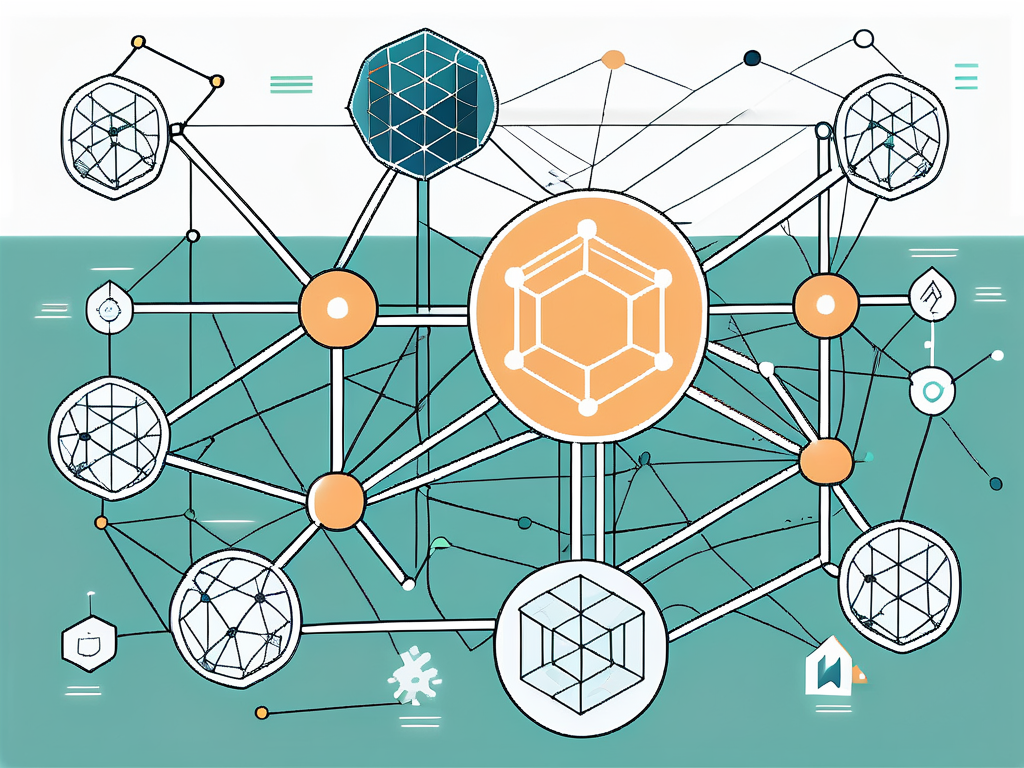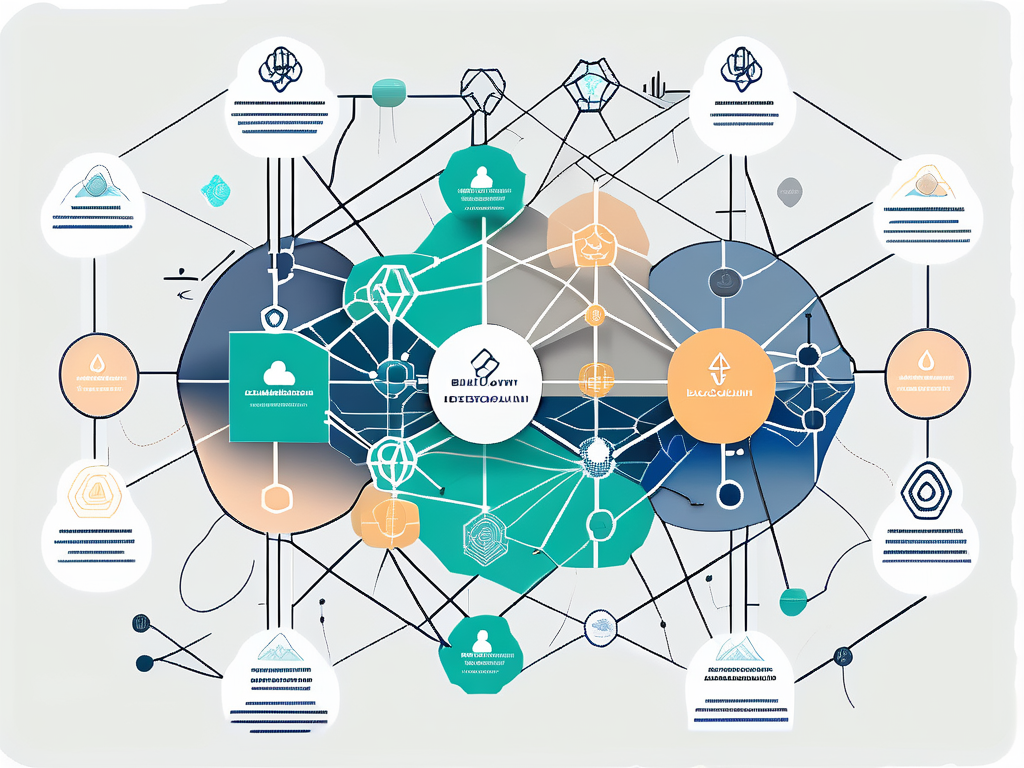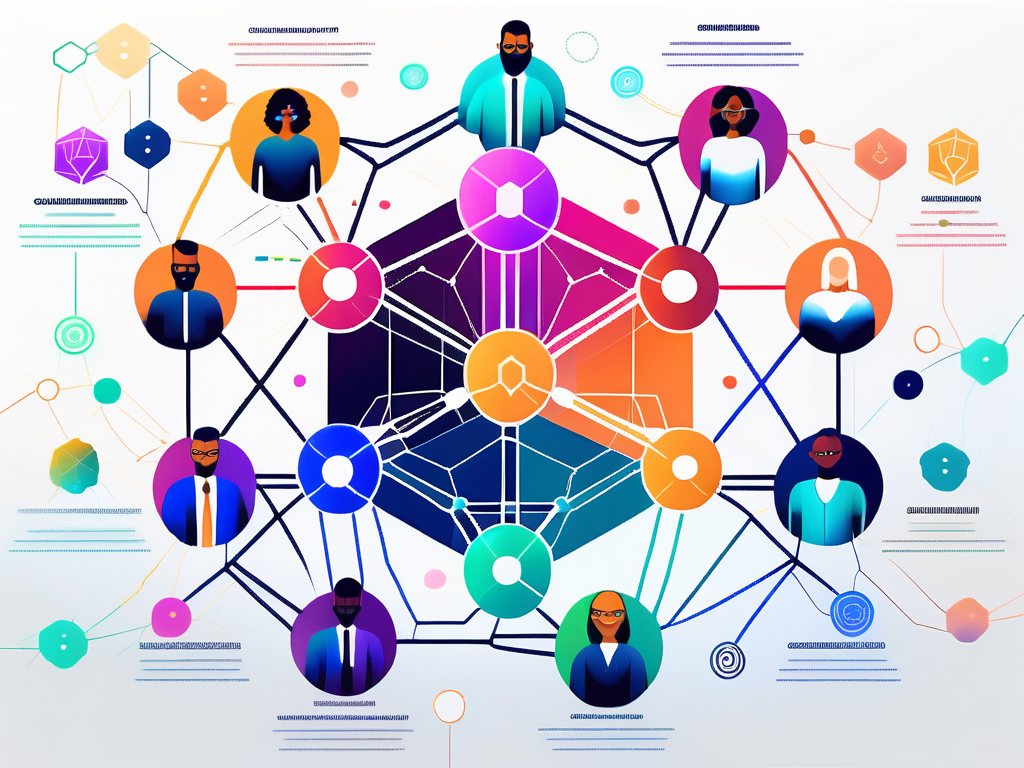Understanding Blockchain and Decentralized Projects
Before diving into the selection criteria, it's vital to grasp the fundamentals of blockchain technology and its role in decentralized projects. Blockchain serves as a distributed ledger that records transactions across multiple computers, ensuring data integrity and transparency without the need for intermediaries.
Defining Blockchain Technology
At its core, blockchain technology enables the secure and transparent sharing of information. Each transaction is grouped into a block, which is then cryptographically linked to the block that came before it. This chain of blocks creates an immutable record that can be audited and verified by anyone on the network.
One of the standout features of blockchain is its decentralized nature. Unlike traditional databases controlled by a single entity, blockchain allows multiple participants to access and validate data, reducing the risks associated with centralized systems. This decentralization not only enhances security but also democratizes access to information, empowering individuals and organizations to engage with the technology on their own terms.
The Concept of Decentralization
Decentralization refers to the distribution of authority, governance, and control across multiple nodes, as opposed to being concentrated in a single location or entity. In decentralized projects, stakeholders have equal access to the system, fostering greater inclusivity and trust.
This shift in control can lead to various advantages, such as increased resistance to censorship, enhanced privacy, and greater resilience to failures. However, it also presents challenges, including the need for robust consensus mechanisms to validate transactions and maintain network integrity. Moreover, the decentralized model encourages innovation, as developers can create applications that leverage blockchain's unique properties without needing permission from a central authority, thus spurring a wave of creativity in various sectors, from finance to supply chain management.
Furthermore, the implications of decentralization extend beyond just technology; they touch on social and economic dimensions as well. By redistributing power away from central authorities, decentralized projects can empower marginalized communities, providing them with tools to participate in the global economy. This empowerment can lead to new economic models, such as decentralized finance (DeFi), where individuals can access financial services without traditional banking barriers, promoting financial inclusion and economic independence for those previously underserved by conventional systems.

Key Factors to Consider When Choosing a Blockchain Network
When evaluating potential blockchain networks for your project, several key factors should influence your decision. Understanding these elements can help identify the right platform that aligns with your specific goals.
Scalability and Performance
Scalability is one of the most critical considerations when choosing a blockchain network. The ability of a network to handle increased loads and transaction volumes without sacrificing performance is essential for long-term success.
Some blockchain networks are designed with scalability in mind, utilizing technologies such as sharding or layer-2 solutions to enhance throughput. Assessing your project's growth potential and transaction requirements will guide you in selecting a network that can accommodate future demands. Moreover, it’s important to analyze the network's historical performance during peak loads, as this can provide insights into how well it can adapt to sudden spikes in activity, which is particularly relevant for applications that may experience seasonal or event-driven surges.
Security and Privacy
In the world of blockchain, security is paramount. Evaluating the underlying security architecture of a network is critical to protect sensitive data and ensure the integrity of transactions. Look for networks that employ robust encryption practices, have a proven track record, and are resistant to attacks.
Additionally, consider privacy features that may be necessary for your project. Some blockchain platforms offer privacy-preserving technologies that allow users to conduct transactions anonymously, addressing concerns related to data exposure. The implementation of zero-knowledge proofs or ring signatures can enhance privacy, making it crucial to evaluate whether these features align with your project's regulatory requirements and user expectations. Furthermore, understanding the implications of privacy on user trust and adoption can significantly influence the overall success of your blockchain initiative.
Consensus Mechanisms
The consensus mechanism employed by a blockchain network is fundamental to its operation. It determines how transactions are validated and added to the ledger. Common consensus algorithms include Proof of Work, Proof of Stake, and Delegated Proof of Stake, each with its own strengths and weaknesses.
Understanding the implications of these mechanisms, such as energy consumption, accessibility, and decentralization, will enable you to select a network that aligns with your project's ethos and operational goals. For instance, while Proof of Work is known for its security, it often requires significant computational resources, raising concerns about environmental sustainability. Conversely, Proof of Stake offers a more energy-efficient alternative but may introduce complexities related to wealth concentration and governance. Analyzing the trade-offs between these mechanisms can help you make an informed decision that balances performance, security, and ethical considerations in your blockchain strategy.

Overview of Popular Blockchain Networks
As you weigh your options, gaining insight into some popular blockchain networks can provide context for your decision-making process. Each network offers distinct features catering to different types of projects.
Ethereum and its Features
Ethereum is one of the most renowned blockchain platforms, primarily known for enabling the creation of smart contracts and decentralized applications (dApps). Its robust ecosystem supports various functionalities, making it suitable for a wide range of projects.
Ethereum utilizes a Proof of Stake consensus mechanism through Ethereum 2.0, which enhances its scalability and reduces environmental impact compared to its predecessor. Additionally, a large and active community contributes to its ongoing development and support.
Moreover, Ethereum has become the foundation for numerous innovative projects, including decentralized finance (DeFi) applications and non-fungible tokens (NFTs). The ability to create tokens on its platform has led to a flourishing marketplace where creators and investors alike can engage in new economic models. The introduction of layer-2 scaling solutions further bolsters Ethereum’s capacity to handle increased transaction volumes, making it a continually evolving platform that adapts to the needs of its users.
The Advantages of Hyperledger
Hyperledger is an umbrella project that offers various open-source blockchain frameworks designed for enterprise solutions. Its modular architecture enables organizations to tailor blockchain solutions to their needs.
One of Hyperledger’s key advantages is its emphasis on permissioned networks, allowing organizations to control who accesses their blockchain and what data can be shared. This feature is particularly beneficial for industries such as finance and supply chain that require enhanced privacy and regulatory compliance.
Additionally, Hyperledger’s support for multiple programming languages and its focus on interoperability between different blockchain systems make it a versatile choice for enterprises looking to integrate blockchain technology into their existing infrastructures. The collaborative nature of Hyperledger, backed by a consortium of industry leaders, fosters innovation and accelerates the development of solutions that address real-world business challenges, ensuring that organizations can leverage the full potential of blockchain technology.
Exploring Corda's Capabilities
Corda is a blockchain platform specifically designed for business use cases. It focuses on enabling secure transactions between businesses while maintaining data privacy. Unlike traditional blockchains that broadcast transactions to all participants, Corda ensures only relevant parties are involved in transaction validation.
Its unique notary service adds a layer of security by confirming transactions and preventing double-spending, making it a reliable choice for projects in regulated industries.
Furthermore, Corda's architecture allows for the creation of smart contracts that are tailored to specific business processes, enabling organizations to automate workflows while ensuring compliance with regulatory requirements. This flexibility, combined with its focus on privacy, makes Corda particularly appealing for sectors such as healthcare and insurance, where sensitive data handling is paramount. By fostering collaboration between different organizations while maintaining confidentiality, Corda stands out as a solution that meets the complex demands of modern business environments.
Matching Blockchain Networks to Project Needs
Once you understand the intricacies of various blockchain networks, the next step is to align them with your project's specific requirements. By carefully considering your unique needs, you can make an informed decision.
Identifying Your Project's Requirements
Begin by conducting a thorough analysis of your project's goals, target audience, and expected transaction volume. This analysis should include considerations for future scalability, required privacy measures, and any regulatory compliance necessary for your industry.
Engaging stakeholders and gathering input from potential users can also provide valuable insights into the features that will be most beneficial for your decentralized project.
Aligning Blockchain Features with Project Goals
With a clear understanding of your project's requirements, you can now compare them with the features of various blockchain networks. This alignment process helps ensure that the network you choose will support your project's long-term success and sustainability.
Consider leveraging matrices to evaluate how different networks meet your criteria. Factors such as transaction speed, governance models, and overall cost of operation should be weighed against your project goals to arrive at the best possible fit.

The Role of Community and Support in Blockchain Selection
Lastly, the community surrounding a blockchain network can significantly impact your project's success. An active and supportive community can be an invaluable resource as you navigate the complexities of blockchain development and integration.
Importance of an Active Developer Community
A vibrant developer community fosters innovation and collaboration, creating an environment where knowledge is shared and projects can learn from each other's experiences. Look for networks with various resources, including forums, documentation, and active social media presence.
By engaging with the community early on, you can gain insights into best practices, ongoing developments, and potential pitfalls to avoid as you undertake your decentralized project.
Evaluating the Level of Support and Resources
When choosing a blockchain network, it is crucial to evaluate the level of support and resources available for your project. This includes access to technical support, development tools, and educational resources.
The availability of these resources can determine how swiftly you can address challenges and deploy your solution effectively. Ensure that the network you select has substantial documentation, tutorial content, and customer support to assist you at every stage of your project.
In conclusion, choosing the right blockchain network for a decentralized project involves careful consideration of various factors, including technology features, security, scalability, and community support. By following the guidelines outlined in this article, you can make an informed choice that aligns with your project's unique requirements and goals.
As you embark on the journey to select the right blockchain network for your decentralized project, remember that the partnerships you forge along the way are equally crucial. At Refetrust, we specialize in connecting you with top-tier agencies and service providers that can complement your blockchain endeavors. Our extensive database and verified reviews streamline your search, allowing you to compare and choose partners with confidence. Let us help you save time and accelerate your project's growth. Take the next step towards strategic success and Find Agencies that align with your blockchain project's vision and goals today.





